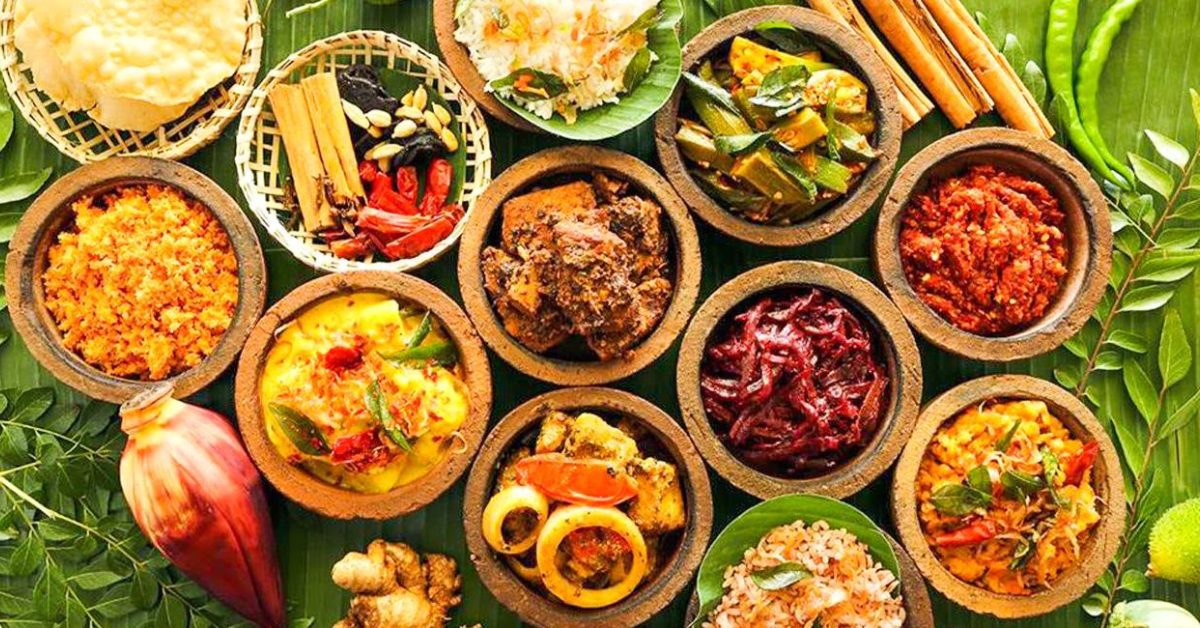
The Power-Packed Heritage of Sri Lanka’s Heirloom Rice: A Healthier Carb with a Timeless Story | In the mist-shrouded highlands of Sri Lanka, where ancient terraces cascade like emerald staircases, a quiet agricultural renaissance is taking root—one sacred grain at a time.
Heirloom rice, or paaramparika sahal as it’s known locally, is no ordinary staple. These traditional varieties—passed down through generations of farmers—are reclaiming their place in kitchens, export markets, and health-conscious diets worldwide. Far from the uniform, high-yield hybrids that dominate global agriculture, Sri Lanka’s heirloom rice offers richer flavor, superior nutrition, and a cultural legacy that spans over 2,500 years.This isn’t just food. It’s history. It’s medicine. It’s identity.
Long before the Green Revolution reshaped global farming, Sri Lanka—then known as Thambapanni or Serendip—was a rice civilization. The Mahavamsa, the island’s ancient chronicle, records irrigated paddy systems dating back to 543 BCE. By the Anuradhapura Kingdom (3rd century BCE–10th century CE), engineers had built vast reservoirs like Tissa Wewa and Kala Wewa, sustaining rice fields that fed millions.
Over 2,000 traditional rice varieties were documented in medieval texts like the Saddharma Ratnavaliya. Each had a purpose: Pachchaperumal for its fragrant red grains used in temple offerings; Suwandel for its delicate, jasmine-like aroma reserved for royalty; Kalu Heenati, a black rice prized for postpartum recovery. Some were flood-resistant, others drought-tolerant. Many carried medicinal properties recognized in Ayurveda—Rathu Heenati to balance blood sugar, Maa Wee to boost immunity.
Then came colonialism and modernization. Portuguese, Dutch, and British rulers shifted focus to cash crops. After independence in 1948, the Green Revolution introduced hybrid seeds like IR8—high-yielding, but chemically dependent. By the 1990s, over 80% of Sri Lanka’s paddies were planted with modern varieties. Traditional seeds vanished from mainstream farms, surviving only in remote villages, preserved by elders who refused to forget.
Click on here “The “Less Is More” Look: How Ingredient Transparency Is Redefining Beauty in 2025”
Heirloom rice isn’t just nostalgic—it’s scientifically superior.
Unlike polished white hybrids, traditional varieties are minimally milled, retaining the nutrient-dense bran and germ. A 2018 study in the Journal of Food Science and Technology analyzed 12 Sri Lankan heirloom varieties and found:
Fiber? Up to 5% in brown heirlooms, promoting gut health and satiety. These aren’t empty carbs—they’re functional foods, naturally fortified.
Farmers and chefs rave about the taste. Suduru Samba cooks soft and slightly sweet; Pachchaperumal releases a nutty, almost popcorn-like aroma. A bowl of kiribath (milk rice) made with Sudu Heenati isn’t just breakfast—it’s ceremony.
The comeback began in the early 2000s. The Department of Agriculture, NGOs like the Ceylon Heritage Trust, and seed banks in Polonnaruwa and Bathalagoda began collecting and reviving endangered varieties. Over 1,500 accessions are now preserved.
Farmers in Matale, Ampara, and Batticaloa formed cooperatives, growing heirlooms organically. Yields are lower—2–3 tons per hectare vs. 5–6 for hybrids—but prices are higher: 300 LKR/kg and up. Export brands like Lanka Organic and Soul Rice ship to Europe, Australia, and the U.S., marketing them as gluten-free, vegan superfoods.
Chefs are evangelists. At Colombo’s Ministry of Crab, Kalu Heenati is used in risotto. Eco-lodges in Ella serve hopper breakfasts with Dik Wee. Even cricketers—Sri Lanka’s cultural icons—train on traditional rice for sustained energy.
The Heirloom Rice Project (IRRI & RRDI, 2015–present) has trained over 5,000 farmers, boosting incomes by 40%. Women-led groups now produce rice noodles, flour, and snacks—turning heritage into enterprise.
Revival isn’t easy. Climate change brings erratic monsoons and new pests. Low yields discourage large-scale adoption. But innovation helps: intercropping with legumes restores soil; community seed swaps preserve diversity; digital platforms connect farmers to premium buyers.
Sri Lanka is also pursuing Geographical Indication (GI) tagging—like Champagne or Darjeeling—to protect and brand its heirloom rices globally.
Click on here “Conflict Without Damage: A Five-Step Talk”
In a post-pandemic world obsessed with immunity and sustainability, heirloom rice checks every box:
And it tastes better.How to Bring Heirloom Rice Home
Click on here “Easy Officewear for everyday”

SatynMag empowers women with inspiring stories, expert advice, and uplifting content to fuel their strength and dreams
Welcome to Satynmag S Suite, online knowledge platform for career and personal growth. This is where you can empower yourself with cutting edge knowledge, latest know-how and grow.


